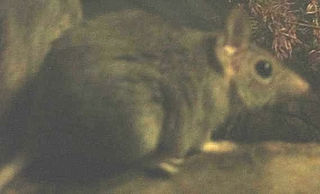Related Research Articles

The Belgian Shepherd is a breed of medium-sized herding dog from Belgium. While predominantly considered a single breed, it is bred in four distinct varieties based on coat type and colour; the long-haired black Groenendael, the rough-haired fawn Laekenois, the short-haired fawn Malinois, and the long-haired fawn Tervuren; in the United States the American Kennel Club considers the four varieties to be separate breeds.

The Guernsey is a breed of dairy cattle from the island of Guernsey in the Channel Islands. It is fawn or red and white in colour, and is hardy and docile. Its milk is rich in flavour, high in fat and protein, and has a golden-yellow tinge due to its high β-carotene content. The Guernsey is one of three Channel Island cattle breeds, the others being the Alderney – now extinct – and the Jersey.

The Cane Corso is an Italian breed of mastiff. It is used for personal protection, tracking, law enforcement, as a guard dog, and as a companion dog.

Apamea sordens, the rustic shoulder-knot or bordered apamea, is a moth of the family Noctuidae. The species was first described by Johann Siegfried Hufnagel in 1766. It is distributed throughout Europe, east across the Palearctic to Central Asia and to China and Japan. It also occurs in North America.

The fawn antechinus is a species of small carnivorous marsupial found in northern Australia. It is the only Antechinus to be found in the Northern Territory and has a patchy, restricted range. Kunwinjku of western Arnhem Land call this animal Mulbu, as they do many rodents. The spelling is given as Mulbbu on the Bininj Kunwok website

Fawn is a light yellowish tan color. It is usually used in reference to clothing, soft furnishings and bedding, as well as to a dog's coat color. It occurs in varying shades, ranging between pale tan to pale fawn to dark deer-red. The first recorded use of fawn as a colour name in English was in 1789.

The fawn leaf-nosed bat – Hipposideros cervinus – is a species of bat in the family Hipposideridae found in Australia, Indonesia, Malaysia, the Philippines and Vanuatu.

Hoplodrina blanda is a moth of the family Noctuidae. It is found in the Palearctic realm.

The Segugio Maremmano is an Italian breed of scent hound from the coastal plains of the Maremma, in Tuscany. It is mainly used for hunting wild boar, but may also be used to hunt hare and other mammals. Tuscan breeders have selected the dogs for hunting ability, so they are variable in appearance. They may be either smooth-haired or rough-haired.

Archanara dissoluta, the brown-veined wainscot, is a moth of the family Noctuidae. The species was first described by Georg Friedrich Treitschke in 1825. It is found in most of Europe, east into Russia and Siberia.

Pluteus readiarum is a mushroom in the family Pluteaceae. Found in New Zealand, it was described scientifically by New Zealand mycologist Greta Stevenson in 1962.
Oidaematophorus cretidactylus is a moth of the family Pterophoridae that is found in North America.

Erateina zoraida is a species of moth in the family Geometridae first described by Edward Doubleday in 1845. It is the type species of the genus Erateina, by original designation.
Udea indistinctalis is a moth in the family Crambidae. It was described by William Warren in 1892. It is found in North America, where it has been recorded from Alberta, Saskatchewan, Washington and California.
Gelechia veneranda is a moth of the family Gelechiidae. It is found in Mexico (Sonora).
Taygete platysoma is a moth in the family Autostichidae. It was described by Walsingham in 1910. It is found in Mexico.
Lecithocera innotatella is a moth in the family Lecithoceridae. It was described by Francis Walker in 1864. It is found on Borneo.
Trycherodes producta is a moth in the family Depressariidae. It was described by Lord Walsingham in 1912. It is found in Guatemala.
Antaeotricha adjunctella is a moth in the family Depressariidae. It was described by Francis Walker in 1864. It is found in Amazonas in Brazil and in the Guianas.
Antaeotricha ceratistes is a moth in the family Depressariidae. It was described by Lord Walsingham in 1912. It is found in Mexico (Guerrero).
References
| This article on a moth of the subfamily Anomologinae is a stub. You can help Wikipedia by expanding it. |